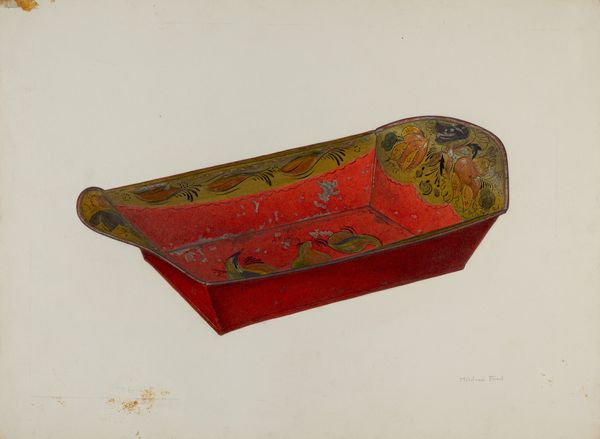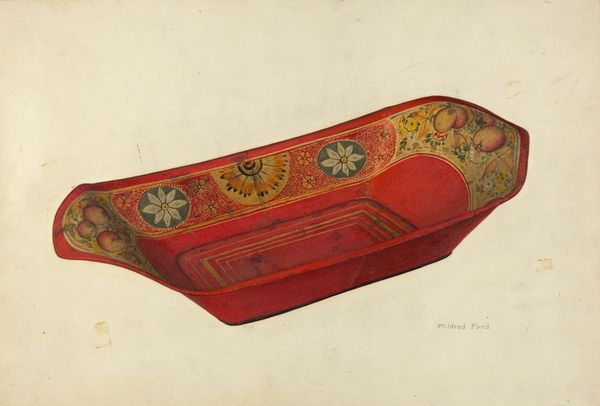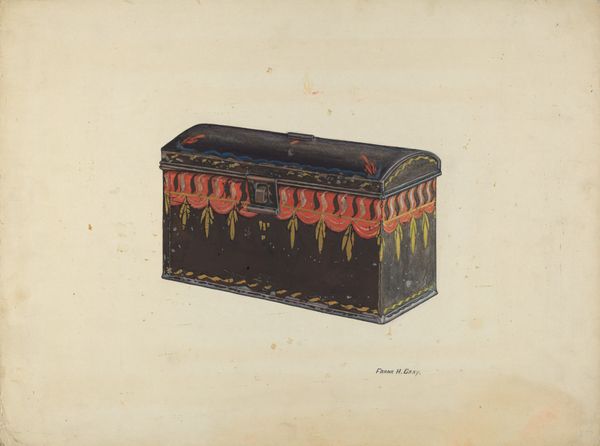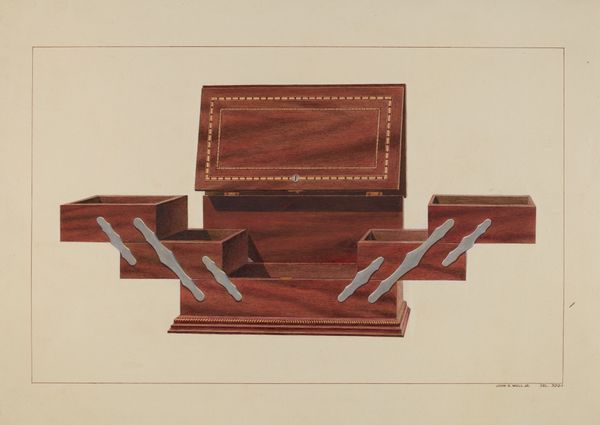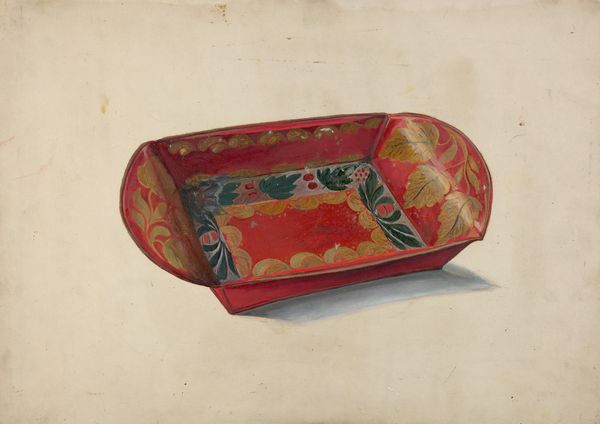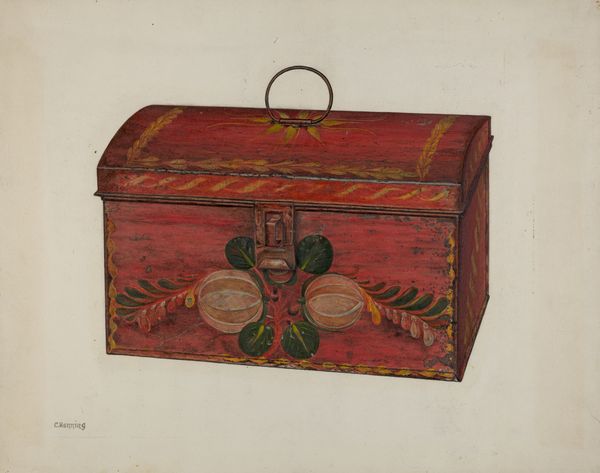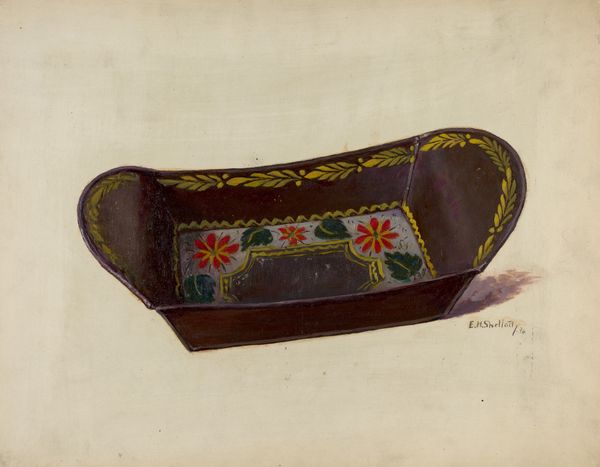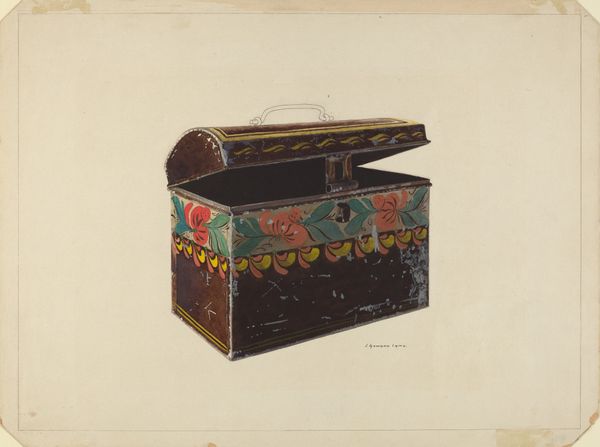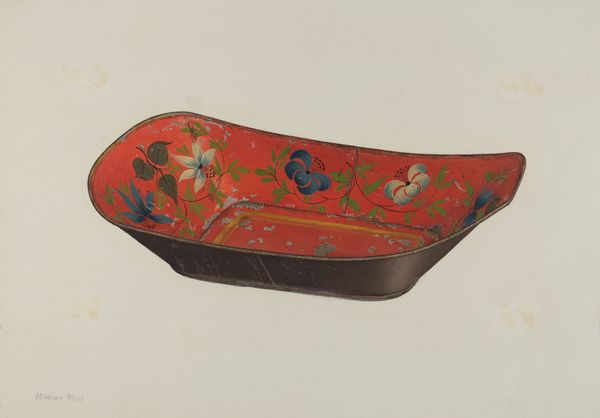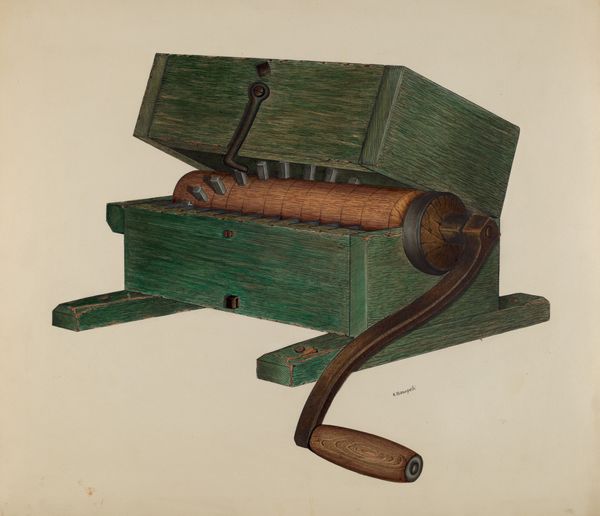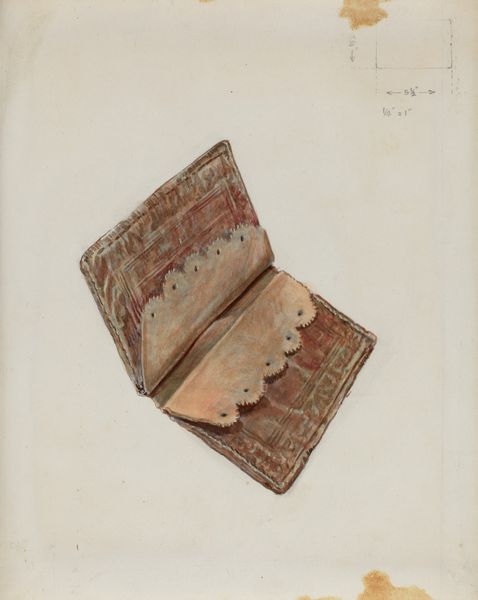
drawing, coloured-pencil
#
drawing
#
coloured-pencil
#
pencil drawing
#
coloured pencil
#
folk-art
#
watercolor
Dimensions: overall: 30.5 x 43.4 cm (12 x 17 1/16 in.) Original IAD Object: 12 5/8" long; 8" wide; 2 5/8" high
Copyright: National Gallery of Art: CC0 1.0
Editor: This is Mildred Ford’s "Toleware Bread Tray," created around 1940, using colored pencils. It has such a cozy, homespun quality, and I wonder about the appeal of such decorative yet functional objects in the 20th century. How should we understand this piece? Curator: Let's consider the historical context. The process of toleware – decorating tinware – originated from a necessity. In 18th-century America, tin was scarce and expensive, demanding value be added, often via decorative painting. Does that origin point change how you value its worth? Editor: Absolutely, knowing that adds a layer of understanding of its cultural value and the labor involved. But here it is depicted using coloured pencils as a drawing. How does this mediate this functional item as 'art'? Curator: Exactly. Mildred Ford hasn’t simply represented an object; she’s meticulously documented its material history, its craft, the techniques involved. This wasn't an elitist practice. Think about the gender roles and labor of toleware painting. Do you see a connection with that? Editor: I do! So, Ford is subtly highlighting the labor involved in producing this bread tray, particularly the contributions of women within domestic settings. It really shifts our focus from high art to more vernacular forms of creative expression. Curator: Precisely. Ford challenges our conventional notions about art by presenting a mundane, utilitarian object – and its means of production -- as worthy of artistic consideration. What’s consumption mean for the work itself? Editor: I now see how it elevates the artistry and skill inherent in folk art, underscoring the inherent value of material culture and handmade goods. Curator: Yes, by emphasizing materials and process, it blurs that traditional boundary between ‘fine art’ and ‘craft’. And it all begins by really looking closely at this bread tray, its textures, its origins...
Comments
No comments
Be the first to comment and join the conversation on the ultimate creative platform.
